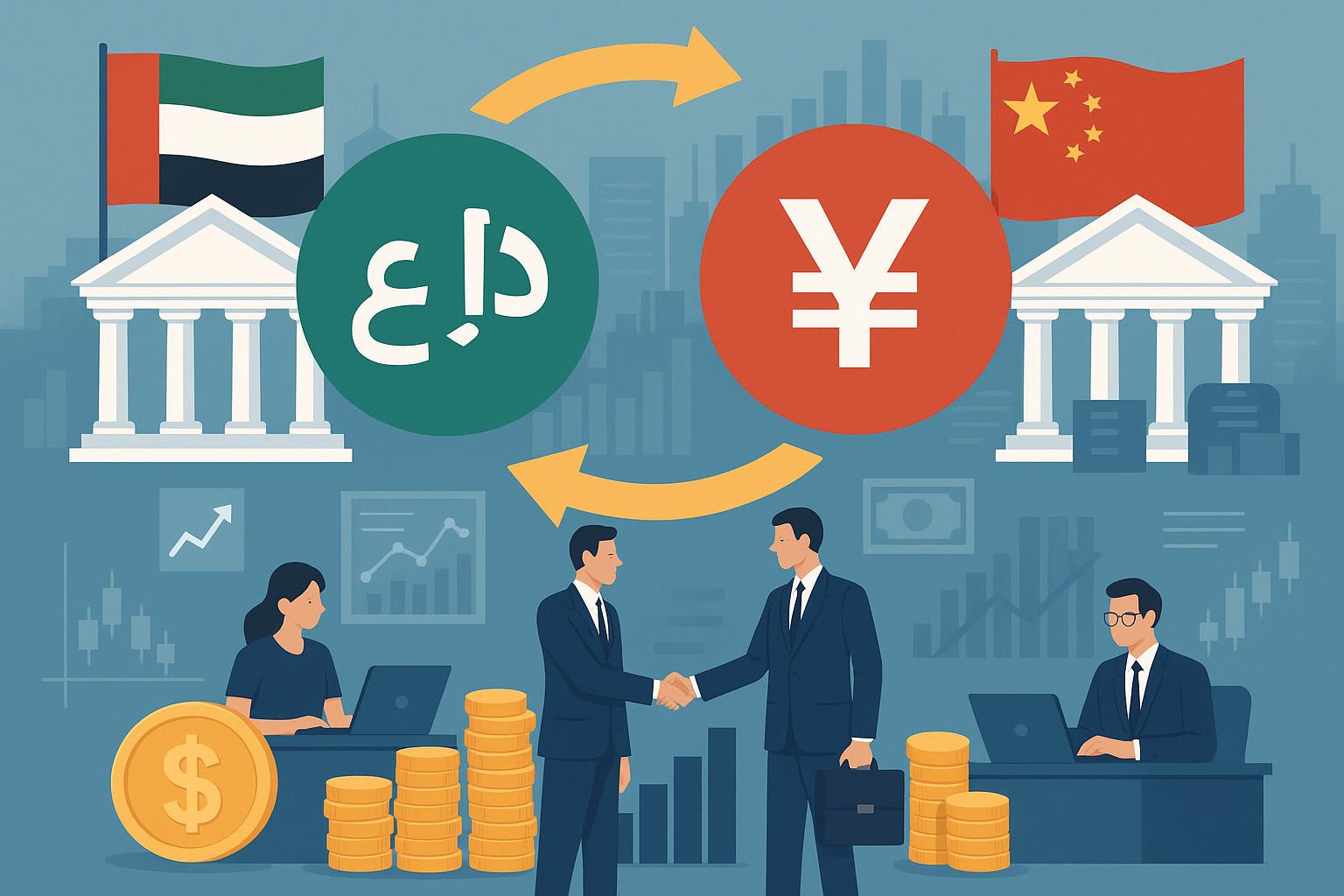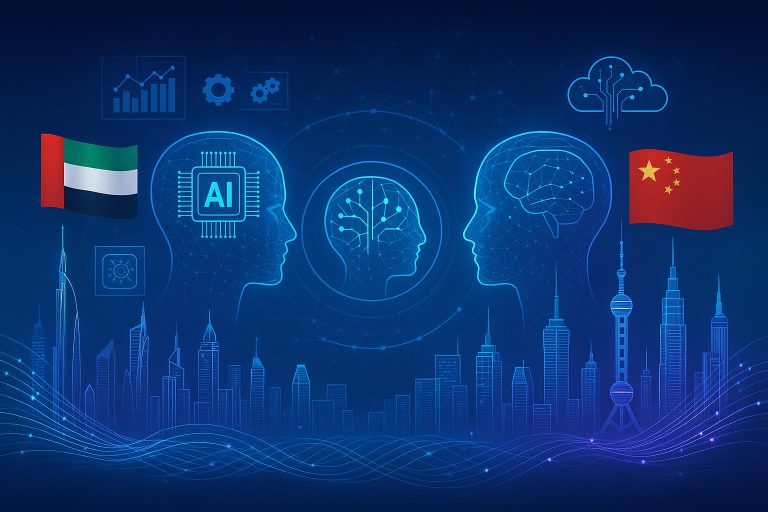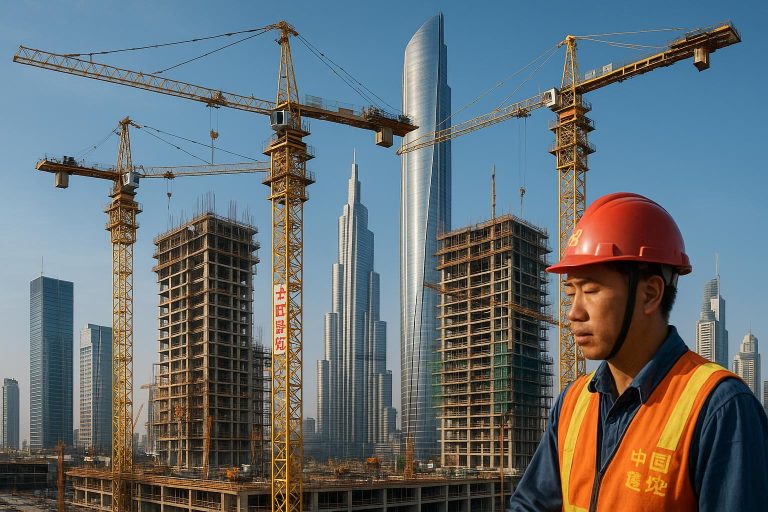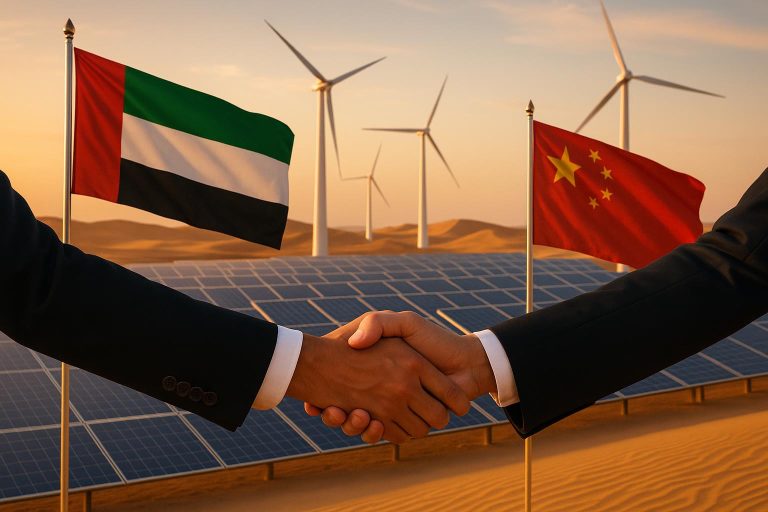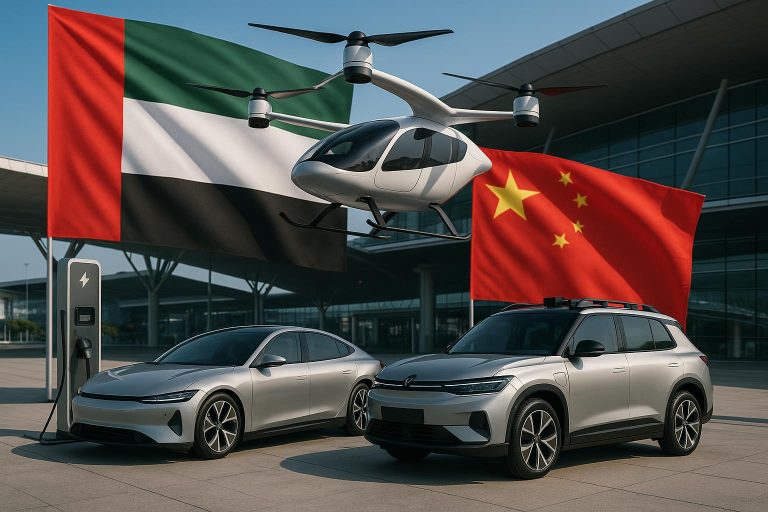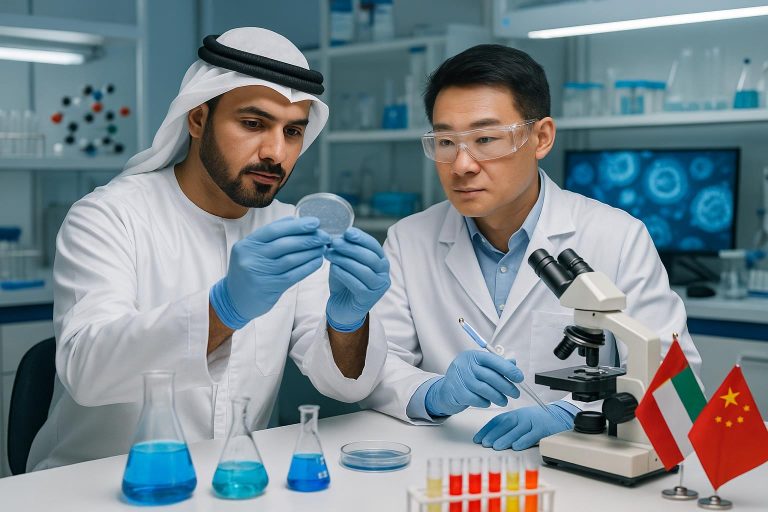Shifting Financial Tides: How UAE-China Financial Cooperation and Local Currency Swaps are Reshaping Investment Flows
Executive Summary
The economic relationship between the United Arab Emirates (UAE) and China has experienced unprecedented growth, evolving into a comprehensive strategic partnership. Bilateral trade surged to a record $101.8 billion in 2024, marking an 800-fold increase since 1984, with the UAE serving as China’s largest export market in the Middle East and China remaining the UAE’s foremost trading partner. This robust trade is complemented by significant investment flows, as UAE investments in China reached $4.5 billion by the end of 2023, a 96% increase year-on-year. A pivotal element in this deepening cooperation is the increasing focus on financial collaboration and local currency swaps, strategically reducing reliance on traditional reserve currencies and fostering direct investment. This article explores how these financial mechanisms enhance economic resilience, reshape investment landscapes, and present vast opportunities while necessitating careful consideration of geopolitical and regulatory challenges. The future trajectory points towards enhanced financial integration and sectoral deepening, underpinned by strategic policy recommendations to sustain this dynamic partnership.
Introduction
The 21st century has witnessed a profound reorientation of global economic power, with the burgeoning relationship between the United Arab Emirates and China standing out as a testament to this shift. Once nascent, the economic ties between these two nations have blossomed into a comprehensive strategic partnership, formally established in 2018. This partnership is underpinned by a shared vision for economic diversification, sustainable development, and enhanced global connectivity, particularly through initiatives like China’s Belt and Road Initiative (BRI). The formation of the UAE-China Investment and Economic Cooperation Working Group and regular high-level diplomatic engagements underscore the commitment to fostering deeper collaboration across various sectors. This article delves into a critical aspect of this evolving relationship: the transformative impact of financial cooperation and the increasing adoption of local currency swaps. These mechanisms are strategically designed to streamline bilateral trade and investment, mitigate foreign exchange risks, and reduce dependence on third-party currencies, thereby fundamentally altering the dynamics of investment flows between the UAE and China. We will explore the current landscape of this cooperation, identify key opportunities and strategic growth drivers, address the inherent challenges and critical considerations, spotlight a relevant case study, and finally, offer a future outlook with strategic recommendations to navigate this dynamic and promising partnership.
The Current Landscape of Bilateral Cooperation
The economic relationship between the UAE and China has witnessed an extraordinary trajectory of growth and diversification, solidifying into a comprehensive strategic partnership. Bilateral trade volume soared to a record $101.8 billion in 2024, an 800-fold increase since 1984. The UAE is China’s largest export market in the Middle East and its second-largest trading partner in the region, while China remains the UAE’s foremost trading partner. Over 15,000 Chinese firms operate in the UAE, and UAE investments in China reached $4.5 billion by the end of 2023, a 96% increase from the previous year. This robust economic integration is supported by a comprehensive strategic partnership established in 2018, featuring the UAE-China Investment and Economic Cooperation Working Group and regular high-level diplomatic engagements, which ensure strategic alignment and mutual trust.
Cooperation spans numerous key sectors, reflecting both nations’ priorities for economic diversification and technological advancement. In Energy and Clean Energy, significant investments are seen in solar and wind power, highlighted by the Masdar-China Silk Road Fund MoU for renewable energy projects within BRI countries. Infrastructure and Logistics are bolstered by projects like the COSCO terminal at Khalifa Port and the China-UAE Industrial Capacity Zone, strategically positioning the UAE as China’s crucial Gulf gateway. Technology and AI collaboration is robust, including a substantial $5 billion partnership for AI, renewable energy, and infrastructure. Companies like G42 play a strategic role in navigating the complex global technology landscape, while Digital Dubai explores AI and smart city technologies in Shenzhen. Trade and Free Zones continue to thrive through JAFZA partnerships with Chinese free trade zones and DP World collaborations, enhancing Dubai’s role in trade facilitation and extending free zone partnerships across various emirates.
Crucially, Finance and Investment are experiencing a profound transformation. The Belt and Road Initiative (BRI) has seen $3.1 billion invested in UAE projects, fostering cross-border investment facilitation. Significant developments include China’s Cross-border Interbank Payment System (CIPS) and the UAE central bank’s cooperation on cross-border payments, alongside Abu Dhabi-China fintech partnerships and the launch of ETFs promoting financial industry cooperation. These initiatives are enhancing cross-border payment connectivity programs for the MENA region, strengthening financial ties. Emerging sectors like Healthcare and Pharmaceuticals are also seeing increased collaboration, with UAE’s Mubadala acquiring UCB Pharma’s mature business in China, and broader partnerships in medical technology and biotech. Agriculture and Food Security are addressed through agreements like the Silal and China’s Shouguang Vegetable Group’s $33 million smart agricultural project, focusing on hydroponics, organic farming, and modern agriculture technologies. In Aviation and Transportation, Emirates and Air China have signed an MoU for enhanced partnership, and a $1 billion deal for 350 flying taxis (eVTOL aircraft) signifies future-oriented collaboration. Logistics and Supply Chain are bolstered by JINGDONG Property’s first Middle East logistics hub in Dubai, leveraging JD.com’s smart supply chain technologies. Finally, Tourism and Hospitality are poised for significant growth, targeting a $1 billion tourism opportunity from China, with the 2025 China-GCC tourism trade fair in Dubai and China Tourism Group exploring UAE hospitality sector investments.
Opportunities and Strategic Growth Drivers
The deepening financial cooperation between the UAE and China, particularly through the strategic adoption of local currency swaps, is unlocking a myriad of opportunities and acting as a powerful catalyst for strategic growth and enhanced economic resilience. These mechanisms are not merely transactional; they represent a fundamental shift in global financial architecture, offering both nations enhanced economic stability and expanded avenues for investment, thereby fostering a more balanced international financial system.
One of the most significant drivers is the move towards De-dollarization and Local Currency Swaps. This initiative aims to reduce reliance on the US dollar in bilateral trade and investment, thereby enhancing financial stability and mitigating exchange rate risks. By facilitating direct investment and trade in local currencies, both the UAE Dirham and the Chinese Yuan gain greater international prominence and utility, contributing to a multipolar currency system. The cooperation between China’s CIPS and the UAE central bank is a pivotal enabler in this regard, streamlining transactions and reducing costs associated with currency conversion. This strategic pivot not only strengthens the financial sovereignty of both nations but also creates a more efficient, predictable, and cost-effective environment for businesses engaged in bilateral commerce, encouraging further investment and trade.
Strong Belt and Road Initiative (BRI) Synergy is another critical driver. The UAE is strategically positioned as a vital hub for the BRI in the Middle East, attracting substantial investments, with $3.1 billion already channeled into BRI projects within the Emirates. This synergy is further exemplified by the Masdar-China Silk Road Fund MoU, which focuses on renewable energy projects within BRI countries, aligning with global sustainability goals and fostering green development. The extensive infrastructure and logistics cooperation, including the COSCO terminal at Khalifa Port and the China-UAE Industrial Capacity Zone, underscores the UAE’s role as a crucial gateway for China’s trade and investment ambitions in the region, enhancing connectivity and supply chain resilience. This collaboration facilitates the seamless flow of goods, capital, and services, reinforcing the UAE’s position as a key node in global trade networks.
Challenges and Critical Considerations
While the UAE-China financial cooperation offers immense opportunities, navigating inherent challenges is crucial for sustainable growth. Geopolitical Dynamics require both nations to balance their burgeoning bilateral relationship with existing alliances and global power shifts, demanding sophisticated diplomacy and strategic foresight. Regulatory and Legal Frameworks necessitate harmonization to ensure transparency, investor protection, and a predictable legal environment, addressing issues like data governance, intellectual property rights, and dispute resolution mechanisms. This includes creating a unified framework that accommodates the legal and regulatory nuances of both jurisdictions, which can be a complex and time-consuming process. Market Volatility and Risk Management remain perpetual concerns, requiring robust assessment frameworks and hedging strategies against currency fluctuations, commodity price volatility, and unforeseen economic shocks. The development of joint risk management protocols and information sharing mechanisms would be beneficial in this regard. Finally, Cultural and Business Practice Differences can pose subtle yet significant hurdles, emphasizing the need for continuous effort and mutual understanding in negotiations and operations. Promoting cross-cultural training programs and establishing joint business councils can help bridge these gaps and foster a more collaborative and effective working relationship. Overcoming these challenges will require a concerted and proactive approach from both sides, ensuring that the partnership remains resilient and adaptable to the evolving global landscape.
Case Study Spotlight: The Silal and China’s Shouguang Vegetable Group Smart Agricultural Project
A prime example of the tangible outcomes of UAE-China cooperation is the $33 million smart agricultural project between Silal, Abu Dhabi’s leading food and agriculture company, and China’s Shouguang Vegetable Industry Holding Group. This initiative, which includes a significant investment of over AED 120 million from the Chinese partner for a 100,000m² Agritech facility in Al Ain, perfectly encapsulates the strategic alignment of both nations’ goals: the UAE’s drive for food security and China’s expertise in agricultural technology. The project focuses on hydroponics, organic farming, and other modern agricultural technologies to enhance crop yields and sustainability in an arid environment. This collaboration not only contributes to the UAE’s food security objectives but also serves as a model for technology transfer and knowledge sharing. It demonstrates how bilateral investments can address critical national priorities while fostering innovation and sustainable development. The success of this project is a testament to the potential of UAE-China partnerships to create mutually beneficial outcomes that extend beyond purely financial returns, contributing to long-term economic resilience and social well-being.
Future Outlook and Strategic Recommendations
The trajectory of UAE-China financial cooperation is poised for continued expansion, driven by mutual economic interests and a shared vision for a more diversified and interconnected global economy. The future outlook suggests a deepening of existing collaborations and the emergence of new avenues for partnership, necessitating strategic recommendations to maximize benefits and mitigate risks.
Enhanced Financial Integration will be a cornerstone of this future. We anticipate a further expansion of local currency settlements and swaps, moving beyond trade to encompass a broader range of investment activities. This could involve the development of joint financial products and services tailored to the needs of bilateral investors, such as dual-currency investment funds or specialized credit lines. Deepening fintech collaboration, building on existing partnerships in Abu Dhabi and cross-border payment initiatives, will also be crucial. This includes exploring blockchain-based solutions for trade finance and digital currency cooperation, further enhancing efficiency and security in financial transactions.
Sectoral Deepening will continue to drive investment flows. While existing collaborations in renewable energy, advanced technology, and food security will see continued investment, there is significant potential for exploration into new, high-growth areas. This includes the burgeoning space economy, advanced manufacturing, biotechnology, and sustainable urban development. Both nations possess unique strengths that can be leveraged through joint ventures and technology transfers in these frontier sectors, fostering innovation and creating new economic value chains. The UAE’s strategic diversification efforts align perfectly with China’s industrial upgrading ambitions, creating a powerful synergy for future growth.
To facilitate this ambitious future, several Policy Recommendations are essential. Firstly, streamlining regulatory processes for cross-border investments is paramount. This involves harmonizing investment laws, simplifying bureaucratic procedures, and establishing clear guidelines for foreign direct investment to reduce entry barriers and enhance investor confidence. Secondly, promoting educational and cultural exchanges will be vital in fostering deeper understanding and trust between the business communities and populations of both nations. This can include scholarships, joint research programs, and cultural festivals, which build the human capital necessary for sustained collaboration. Lastly, strengthening multilateral platforms for dialogue and cooperation, both regionally and globally, will ensure that the UAE-China partnership contributes positively to global economic stability and inclusive growth. This proactive engagement will help address shared challenges and champion a more equitable and prosperous international order.
Conclusion
The strategic partnership between the United Arab Emirates and China has evolved into a formidable force, driven by an unprecedented surge in bilateral trade and investment. The proactive embrace of financial cooperation, particularly through local currency swaps, stands as a pivotal mechanism reshaping global investment flows and fostering a more resilient and diversified economic landscape. This collaboration not only mitigates traditional foreign exchange risks and reduces reliance on third-party currencies but also unlocks vast opportunities across a spectrum of sectors, from renewable energy and advanced technology to healthcare and food security. While navigating geopolitical complexities, regulatory harmonization, market volatility, and cultural nuances remains crucial, the shared commitment to economic diversification and strategic growth positions both nations for continued success. The future promises enhanced financial integration and sectoral deepening, underpinned by thoughtful policy recommendations that will further solidify this dynamic and mutually beneficial relationship, ensuring its enduring positive impact on regional and global economies.
References
UAE-China Bilateral Investment Research Findings (Provided Research Data)

